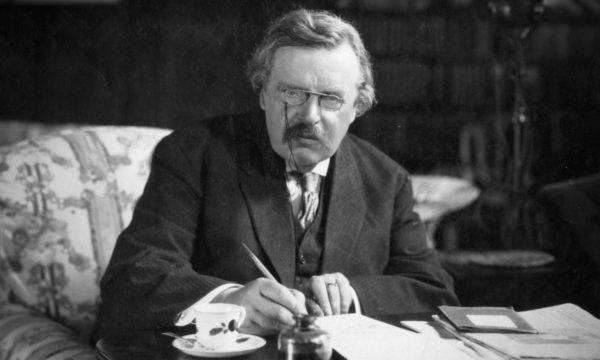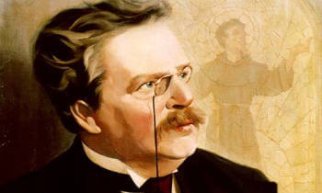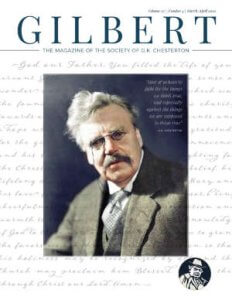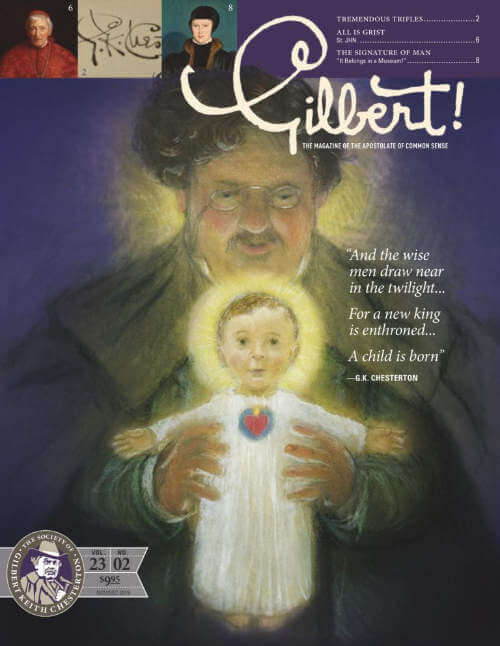I confess that I have had this plan all along and Dale fell for it! Even if my clerihew submissions for the Kansas City Conference did not impress themselves upon the judges as winners, how innocently I could volunteer to write a piece on Newman’s canonization as a way to ensure that my sad clerihew would see the light of day. Here it is:
If there’s room in heaven for a thin man like Newman, Chesterton should be a shoe-in. The English Cardinal made a splash; With Chesterton’s arrival a cannonball blast!
How painful was that? I’m sure I’m not the first one to co-opt a column in this illustrious magazine to publish a losing clerihew. What is my consolation prize for going unnoticed at the summer conference? An opportunity to share about the grace-filled days of our recent sojourn in Rome for John Henry Newman’s Canonization on October 13th.
When Philip Neri was canonized on March 12th, 1622, with the likes of Ignatius Loyola, Francis Xavier, Teresa of Avila and Isadore the Farmer, a jocular Roman who has been quoted down through the centuries said that “four Spaniards and a Saint” were given to the Church that day. How fitting then that for the canonization of one of St. Philip’s greatest spiritual heirs it was “four women and Newman.” As important as the spiritual legacy of those holy women certainly is, I’m going to presume that for Chestertonians reading this piece, there is a hearty appreciation for the luminous figure who hung at the center of St. Peter’s façade, held up as a Saint for our times.
Newman was at the fountainhead of a literary and spiritual revival in England, a revival which led to the linking of arms and hearts with many literary and spiritual agents of renewal in continental Europe and America. Chesterton’s stage was set in many ways by Cardinal Newman, who received the red biretta from Pope Leo XIII just five years after Chesterton’s birth. Leo famously referred to Newman as ‘il mio Cardinale.’ Although as a lay preacher in his Saturday pulpit, Chesterton wielded his pen as essentially the same kind of figure as Newman: an essayist, a journalist, a controversialist. Neri would have approved wholeheartedly, not only for Chesterton’s wit but because he had a keen insight into the laity’s essential mission.
Roman days are momentous days. This is not only due to the monumental architecture and deep sense of place in Rome, but also to the idea that all roads converge in Rome. Having lived for five years at the Pontifical North American College, I became very used to running into all sorts of familiar faces at unexpected times. It strangely gives one the impression of a smallish town. With the pilgrims gathering for the canonization, I was very struck by the magnetic attraction of Newman for his friends throughout the world. An instantaneous fellowship was enjoyed. Indeed a cult entails friendship: to meet those devoted to one you also love is to find your way readily into conversation and delightful communion. How true this was of the countless Newman devotees we met, and how beautifully embodied in the circles of Chestertonians that I know in places far and near.
This is perhaps the central insight of my week in Rome: Newman’s attraction and appeal are real and become a motive force. Spiritual apprenticeship with him leads his spiritual children to action and decisive commitment to the Gospel. All throughout our pilgrimage we met his friends and discovered that they were like us, learning to love like him and labor for God’s glory like him. How similar this impression was to what I feel among Chestertonians, whatever language they might speak.
Where Chesterton is being read and rediscovered, initiative is being taken, lives are being changed. So many of the elements of Chesterton’s public cult exist that resemble what I experienced in Rome among those who love Newman for one facet of his person or another. One way I would say that Chesterton’s cult is even further developed is the way in which all sorts of ‘holy swag’ has come into being. Newman devotees could learn a thing or two from the Society of Gilbert Keith Chesterton on how to create hagiographic merchandise.
One of my unexpected encounters in Rome was with a priest-friar, Innocent Smith, O.P., in the Sacristy of St. Peter’s. Meeting him reminded me of the line in Manalive: “I don’t deny that there should be priests to remind men that they will one day die. I only say that at certain strange epochs it is necessary to have another kind of priests, called poets, actually to remind men that they are not dead yet.” We are in one of those strange epochs. As I think about St. John Henry Newman who embodied the priestly call, my thoughts drift to his spiritual successor of the next century, who dreamt up Innocent Smith, and who himself became a poet who could wake people out of spiritual slumber and call them to become men fully alive. One day—please God and Holy Church—may his banner hang on that travertine façade to the acclamation of the global family of Chestertonians.
Please pray for my brothers and I as we pursue the Oratorian way of life in Minneapolis, a spiritual path not only for priests but for the faithful as well. We are being motivated by Newman, the man who is called the Second Founder of the Oratory, and Philip, the man who initiated the Oratorian way in imitation of the early Christians for whom Rome became his India. We are also motivated by Gilbert Keith Chesterton, a man who lived the Oratorian spirit in his own way. We saw the banner of St. Philip that adorned the façade of San Pietro on his canonization day, now hanging in the saint’s rooms at Chiesa Nuova (the 400-plus-year-old ‘New Church’). The grace of apprenticing with a saint is that they offer not only an example but the needed intercession and heavenly aid. We asked St. Philip Neri, the ‘Man of Primitive Times’ as Newman described him, to help us be faithful in our time and place. We ask GKC, the Beaconsfield Evangelist, to help us too.
ABOUT FR. SPENCER HOWE
Fr. Howe is the Chaplain and a Board Member, for The Society of Gilbert Keith Chesterton






